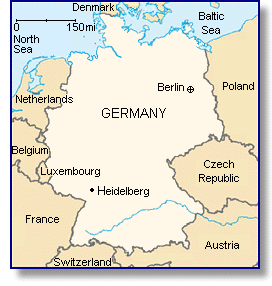 Destination Ludwigshafen, Germany:
Destination Ludwigshafen, Germany:
The Birth of Buna
< Back | Main menu | PSLC | Next >
The Great War is over, and the Germans now have the luxury of time to do good research on making a synthetic rubber that is better than methyl rubber. After not too much looking, they hit upon butadiene, the simplest of the dienes, because it can also be made from acetylene in a process not too much different from that used to make methyl isoprene. While this procedure is too expensive for a rubber made from butadiene to compete with natural rubber commercially, the Germans push ahead anyway.
Initially, the butadiene is polymerized with sodium metal in much the same way that the "B" type of methyl rubber was made. They call this butadiene-based rubber Buna after the chemicals used in it's synthesis: Bu for butadiene and Na for natrium, the old name for sodium. This synthesis is expensive, and the rubber produced is inferior to natural rubber. So the Germans abandon the sodium polymerization for an emulsion polymerization. This method is cheaper, but the polymerization takes weeks to reach high conversion. Not to be outdone by a simple chemical, research is conducted on finding a catalyst to speed up the reaction. Slowly, the reaction time is reduced from weeks to days, and finally to just a few hours. Wunderbar!
In 1933, the German government, in an effort to avoid another mistake like that of the last war, start a "Four Year Plan" to achieve maximum self-sufficiency. In other words, the government says that within four years, no food or chemicals will be imported into Germany. One of the first actions of this plan is to force German rubber companies to use the new Buna rubber. Well, the first Buna rubber is pretty bad stuff, and the rubber companies hate using it, but they have no choice.
Not long after the announcement of the plan, Dr. Walter Bock and Eduard Tschunkur find a solution. They exchange 25% of the butadiene for another, cheaper material, styrene. This new rubber, Buna-S, the "S" standing for styrene, is found to have much better wear resistance in it's raw form than even the highest quality natural rubber. As you might have guessed, there is a problem. The Buna-S rubber cannot be compounded and vulcanized easily on the machines made for natural rubber. A softening agent can be added to make the compounding easier, but then the improved properties are lost. With the "Four Year Plan" in full swing, the rubber companies are forced to use the new rubber, no matter how difficult it is. Initially, almost 7% of their rubber consumption is required to be the new Buna-S rubber. The constant, bitter complaints only get worse. That is, until the next development.
-
Next stop: Germany - Bright Times for Buna
Meanwhile...
While German chemists and rubber companies are trying to make Buna work in 1933, here's what else is going on:
Adolph Hitler becomes dictator of Germany.Prohibition of alcohol in the United States ends.
Saudi Arabia begins development of it's oil industry.
References
-
1. Herbert, Vernon and Attilio Bisio. Synthetic Rubber: A Project That Had to Succeed. Westport, Connecticut: Greenwood Press, 1985.
2. Howard, Frank A. Buna Rubber: The Birth of an Industry, D. van Nostrand Company, Inc., 1947.
3. Wolf, Howard and Ralph. Rubber: A Story of Glory and Greed. New York: Covici, Friede, 1936.
and the Chemical Heritage Foundation
